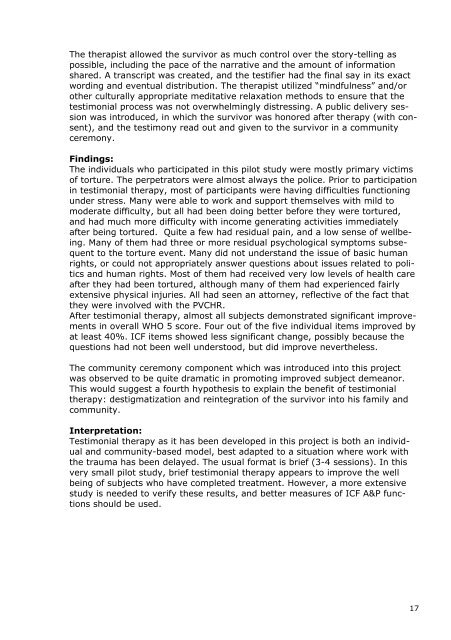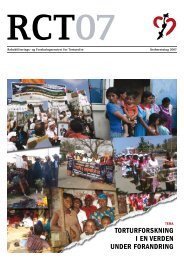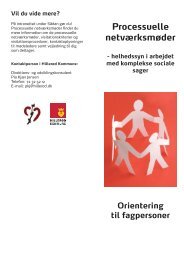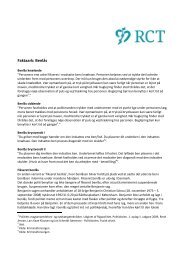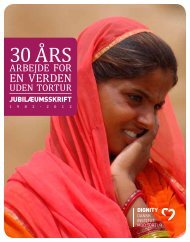Rehabilitating Torture Survivors - Dignity - Danish Institute Against ...
Rehabilitating Torture Survivors - Dignity - Danish Institute Against ...
Rehabilitating Torture Survivors - Dignity - Danish Institute Against ...
You also want an ePaper? Increase the reach of your titles
YUMPU automatically turns print PDFs into web optimized ePapers that Google loves.
The therapist allowed the survivor as much control over the story-telling aspossible, including the pace of the narrative and the amount of informationshared. A transcript was created, and the testifier had the final say in its exactwording and eventual distribution. The therapist utilized “mindfulness” and/orother culturally appropriate meditative relaxation methods to ensure that thetestimonial process was not overwhelmingly distressing. A public delivery sessionwas introduced, in which the survivor was honored after therapy (with consent),and the testimony read out and given to the survivor in a communityceremony.Findings:The individuals who participated in this pilot study were mostly primary victimsof torture. The perpetrators were almost always the police. Prior to participationin testimonial therapy, most of participants were having difficulties functioningunder stress. Many were able to work and support themselves with mild tomoderate difficulty, but all had been doing better before they were tortured,and had much more difficulty with income generating activities immediatelyafter being tortured. Quite a few had residual pain, and a low sense of wellbeing.Many of them had three or more residual psychological symptoms subsequentto the torture event. Many did not understand the issue of basic humanrights, or could not appropriately answer questions about issues related to politicsand human rights. Most of them had received very low levels of health careafter they had been tortured, although many of them had experienced fairlyextensive physical injuries. All had seen an attorney, reflective of the fact thatthey were involved with the PVCHR.After testimonial therapy, almost all subjects demonstrated significant improvementsin overall WHO 5 score. Four out of the five individual items improved byat least 40%. ICF items showed less significant change, possibly because thequestions had not been well understood, but did improve nevertheless.The community ceremony component which was introduced into this projectwas observed to be quite dramatic in promoting improved subject demeanor.This would suggest a fourth hypothesis to explain the benefit of testimonialtherapy: destigmatization and reintegration of the survivor into his family andcommunity.Interpretation:Testimonial therapy as it has been developed in this project is both an individualand community-based model, best adapted to a situation where work withthe trauma has been delayed. The usual format is brief (3-4 sessions). In thisvery small pilot study, brief testimonial therapy appears to improve the wellbeing of subjects who have completed treatment. However, a more extensivestudy is needed to verify these results, and better measures of ICF A&P functionsshould be used.17


